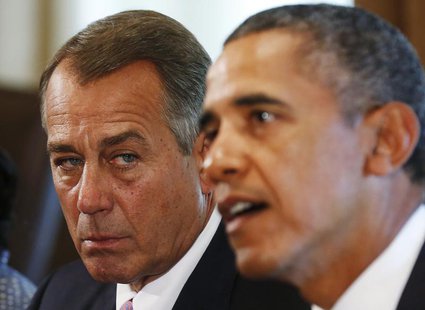An agreement between House Republicans and Senate Democrats in the United States was finally reached October 16 2013, nearly two weeks after political gridlock prompted the partial shutdown of the US federal government. Non-essential services such as museums, national parks, and the IRS are once again operative and 700 000 federal employees have returned to work. Standard and Poor estimates that the shutdown cost the American economy approximately 24 billion dollars. Fourth quarter GDP growth projects have fallen from 3% to 2.4%. However, these statistics disguise what are in fact varied and far-reaching consequences of the shutdown, inside the United States and abroad.
[captionpix align=”right” theme=”elegant” width=”320″ imgsrc=”http://natoassociation.ca/wp-content/uploads/2013/10/federal-worker.jpg” captiontext=”A furloughed federal employee holds a sign on the steps to the US Capitol, October 1 2013.”]
First, direct financial losses were obviously incurred by the US government and the services it employs. IHS, a global economic research firm, estimates that 3.1 billion dollars worth of government services was lost during the shutdown. For example, the National Parks Service estimates that 76 million dollars were lost each day National Parks remain closed. While federal employees will be compensated for their loss of work, many federal contractors do not have the same privileges and will thus incur permanent financial losses. These companies, including several military contractors, were delayed by political uncertainty and have thus incurred the costs of lost productivity.
Beyond these direct costs, the shutdown has significant implications for US monetary policy. The government closure led numerous financial institutions to sell short-term US bonds, reducing the value of US debt. For example, mutual fund investment firm Fidelity, which handles over 400 billion dollars worth of assets, liquidated all US bonds in their possession due in October and November in anticipation of the October 17th deadline.
Unfortunately, this process of liquidation of US bonds only serves to increase US government debt in the long run. Some analyst believes that the government shutdown and subsequent uncertainty over future federal budgets will force the federal government to fund its economic stimulus package for a longer period of time than previously expected. This could mean adding billions of dollars to US government debt.
It is also important to consider the costs of lost consumer confidence in the United States. Although lost consumer confidence is admittedly difficult to quantify, some believe that its impact on the US economy may be greater than the immediate costs of the shutdown. Consumers may delay buying homes or cars in light of financial uncertainty. Polls show that consumer confidence in the US has reached a 9 month low and this has already reduced profits from the retail sector.
Just as US consumers begin to doubt the dollar reserve, so too do foreign investors and countries. US brinkmanship has damaged the reputation of the USD as a reserve currency. China has been especially vocal, condemning the US Congress for irresponsibility. China owns over a trillion dollars of US bonds and would have taken a massive financial hit in the event of a default. The recent deal between China and London which swapped 32 billion dollars worth of currency suggests that China is trying to reduce its dependence on the American dollar by entering the Yuan into the international currency exchange market.
Finally, Canada has also been affected by the government shutdown. Indeed, many goods were delayed at the Canada-US border because some federal inspectors were deemed non-essential. Ironically, the shutdown delayed the release of much of the data and information necessary to understand its full impact on the economy because such data is collected in part by federal employees. It is clear that until this information is released, our understanding of the US federal government shutdown will inevitably be limited.




